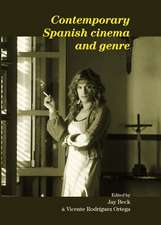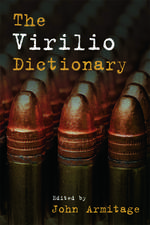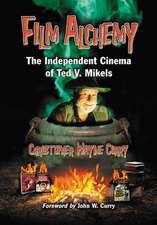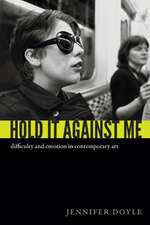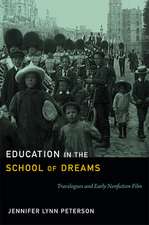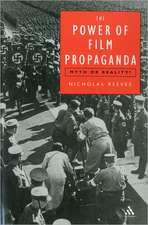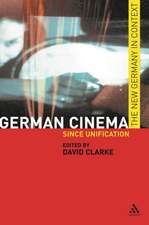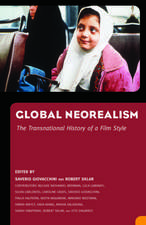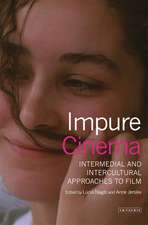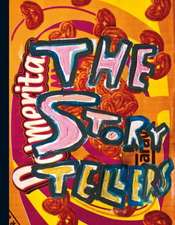World Cinema and the Ethics of Realism
Autor Professor Lúcia Nagiben Limba Engleză Paperback – 23 mar 2011
| Toate formatele și edițiile | Preț | Express |
|---|---|---|
| Paperback (1) | 194.50 lei 6-8 săpt. | |
| Bloomsbury Publishing – 23 mar 2011 | 194.50 lei 6-8 săpt. | |
| Hardback (1) | 570.83 lei 6-8 săpt. | |
| Bloomsbury Publishing – 23 mar 2011 | 570.83 lei 6-8 săpt. |
Preț: 194.50 lei
Preț vechi: 223.76 lei
-13% Nou
Puncte Express: 292
Preț estimativ în valută:
37.22€ • 38.64$ • 31.04£
37.22€ • 38.64$ • 31.04£
Carte tipărită la comandă
Livrare economică 22 martie-05 aprilie
Preluare comenzi: 021 569.72.76
Specificații
ISBN-13: 9781441165831
ISBN-10: 1441165835
Pagini: 312
Ilustrații: 60
Dimensiuni: 152 x 226 x 23 mm
Greutate: 0.5 kg
Editura: Bloomsbury Publishing
Colecția Continuum
Locul publicării:New York, United States
ISBN-10: 1441165835
Pagini: 312
Ilustrații: 60
Dimensiuni: 152 x 226 x 23 mm
Greutate: 0.5 kg
Editura: Bloomsbury Publishing
Colecția Continuum
Locul publicării:New York, United States
Caracteristici
Highlights
the
filmmaker's
commitment
to
truth,
and
film's
material
bond
with
the
real
Notă biografică
Lúcia
Nagibis
Professor
of
Film
and
Director
of
the
Centre
for
Film
Aesthetics
and
Cultures
(CFAC)
at
the
University
of
Reading.
Her
research
has
focused,
among
other
subjects,
on
polycentric
approaches
to
world
cinema,
new
waves
and
new
cinemas,
cinematic
realism
and
intermediality.
She
is
the
author
ofWorld
Cinema
and
the
Ethics
of
Realism(Continuum,
2011),Brazil
on
Screen:
Cinema
Novo,
New
Cinema,
Utopia(I.B.
Tauris,
2007),The
Brazilian
Film
Revival:
Interviews
with
90
Filmmakers
of
the
90s(Editora
34,
2002),Born
of
the
Ashes:
The
Auteur
and
the
Individual
in
Oshima's
Films(Edusp,
1995),Around
the
Japanese
Nouvelle
Vague(Editora
da
Unicamp,
1993)
andWerner
Herzog:
Film
as
Reality(EstaçãoLiberdade,
1991).
She
is
the
editor
ofImpure
Cinema:
Intermedial
and
Intercultural
Approaches
to
Film(with
Anne
Jerslev,
2013),Theorizing
World
Cinema(with
Chris
Perriam
and
Rajinder
Dudrah,
I.B.
Tauris,
2011),Realism
and
the
Audiovisual
Media(with
Cecília
Mello,
Palgrave,
2009),The
New
Brazilian
Cinema(I.B.
Tauris,
2003),Master
Mizoguchi(Navegar,
1990)
andOzu(Marco
Zero,
1990).
Cuprins
List
of
Illustrations
Acknowledgements
Introduction
Part I - Physical Cinema
Chapter 1. The End of the Other
Physical Realism
The Missing Other
Atanarjuat, the Fast Runner
Yaaba
God and the Devil in the Land of the Sun (Black God, White Devil)
The 400 Blows
Chapter 2. The Immaterial Difference: Werner Herzog Revisited
The Excessive Body
Literal Difference
Physical Difference
Representational Difference
Part II - The Reality of the Medium
Chapter 3. Conceptual Realism inLand in TranceandI Am Cuba
Allegorical Real
Reality as Process: Trance inLand in Trance
Trance, Sexuality and the Christian Myth inI Am Cuba
Mimesis of the Principle
Concluding Remarks
Chapter 4. The Work of Art in Progress: An Analysis ofDelicate Crime
Part III - The Ethics of Desire
Chapter 5.The Realm of the Senses, the Ethical Imperative and the Politics of Pleasure
Originality, Beauty and the Porn Genre
The Eroticized Nation
Sex in Red and White: Double Suicide
Anti-Realism and Artistic Real
The Participative Voyeur and the Eroticized Apparatus
Part IV - The Production of Reality
Chapter 6. Hara and Kobayashi's 'Private Documentaries'
Historical Time
Phenomenological Time
Active Subjects
Chapter 7. The Self-Performing Auteur: Ethics in Joao Cesar Monteiro
Ethics of the Impossible Real
God's Autobiography
The History Man
Bibliography
Notes
Index
Introduction
Part I - Physical Cinema
Chapter 1. The End of the Other
Physical Realism
The Missing Other
Atanarjuat, the Fast Runner
Yaaba
God and the Devil in the Land of the Sun (Black God, White Devil)
The 400 Blows
Chapter 2. The Immaterial Difference: Werner Herzog Revisited
The Excessive Body
Literal Difference
Physical Difference
Representational Difference
Part II - The Reality of the Medium
Chapter 3. Conceptual Realism inLand in TranceandI Am Cuba
Allegorical Real
Reality as Process: Trance inLand in Trance
Trance, Sexuality and the Christian Myth inI Am Cuba
Mimesis of the Principle
Concluding Remarks
Chapter 4. The Work of Art in Progress: An Analysis ofDelicate Crime
Part III - The Ethics of Desire
Chapter 5.The Realm of the Senses, the Ethical Imperative and the Politics of Pleasure
Originality, Beauty and the Porn Genre
The Eroticized Nation
Sex in Red and White: Double Suicide
Anti-Realism and Artistic Real
The Participative Voyeur and the Eroticized Apparatus
Part IV - The Production of Reality
Chapter 6. Hara and Kobayashi's 'Private Documentaries'
Historical Time
Phenomenological Time
Active Subjects
Chapter 7. The Self-Performing Auteur: Ethics in Joao Cesar Monteiro
Ethics of the Impossible Real
God's Autobiography
The History Man
Bibliography
Notes
Index
Recenzii
The
Ethics
of
Realism
may
be
too
tame
a
title
for
the
rambunctious
scholarship
this
book
contains.
Lúcia
Nagib
has
a
sharp
eye
for
what,
through
her
lens,
become
stupefying
motifs
and
moments
within
films
that
she
just
as
sharply
cuts
out
of
the
vast
herd
of
movies.
You
can
sense
her
pleasure
at
relaying
to
us
the
cinematic
power
she
has
found
in
cast-off
'failures'
like
I
am
Cuba
or
that
she
resuscitates
in
films
we
thought
we
knew,
such
as
The
400
Blows.
Ultimately
tying
these
to
historical
struggles
of
filmmakers
and
the
societies
they
worked
within,
she
does
in
fact
make
good
on
her
title.
This
is
a
truly
high-minded
argument
for
cinema
as
the
conscience
of
the
past
century.
The
films
Nagib
illuminates
made
and
kept
promises
to
the
world
they
came
from.
This
book
honors
the
importance,
not
just
the
beauty
of
cinematic
art.
--Dudley
Andrew,
R.
Selden
Rose
Professor
of
Film
and
Comparative
Literature,
Yale
University
Lúcia Nagib's book World Cinema and the Ethics of Realism injects new vitality and energy into some important but familiar debates in film theory. In the first instance, her surprising selection of films challenges existing concepts of world cinema. More radically, however, these films have a unifying aesthetic out of which Nagib's own approach to realism comes into focus. These are films that privilege rawness and physicality, that place extreme demands on performers and producers, and inescapably work with the reality of event as well as the recording function of the medium itself. Nagib's grounding for the aesthetic of realism is based on an ethical commitment to the living, temporal, spatial and dramatic exchange between the camera as mechanism and the extreme event it is filming. Nagib has successfully turned the theoretical kaleidoscope, reconfiguring the crucial concept of realism, its significance for film theory, into new, exciting, sometimes shocking, patterns of thought and perception. --Laura Mulvey, Department of History of Art and Screen Media, Birkbeck, University of London
Lúcia Nagib's book World Cinema and the Ethics of Realism injects new vitality and energy into some important but familiar debates in film theory. In the first instance, her surprising selection of films challenges existing concepts of world cinema. More radically, however, these films have a unifying aesthetic out of which Nagib's own approach to realism comes into focus. These are films that privilege rawness and physicality, that place extreme demands on performers and producers, and inescapably work with the reality of event as well as the recording function of the medium itself. Nagib's grounding for the aesthetic of realism is based on an ethical commitment to the living, temporal, spatial and dramatic exchange between the camera as mechanism and the extreme event it is filming. Nagib has successfully turned the theoretical kaleidoscope, reconfiguring the crucial concept of realism, its significance for film theory, into new, exciting, sometimes shocking, patterns of thought and perception. --Laura Mulvey, Department of History of Art and Screen Media, Birkbeck, University of London



